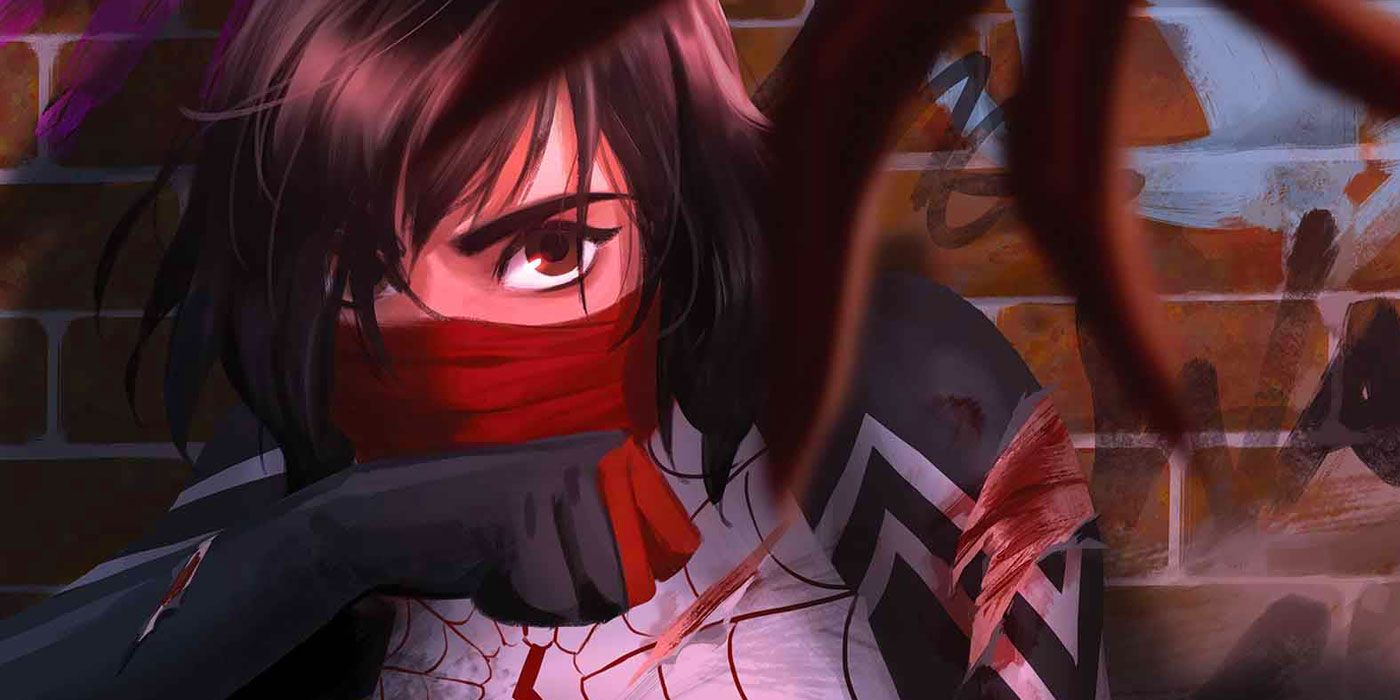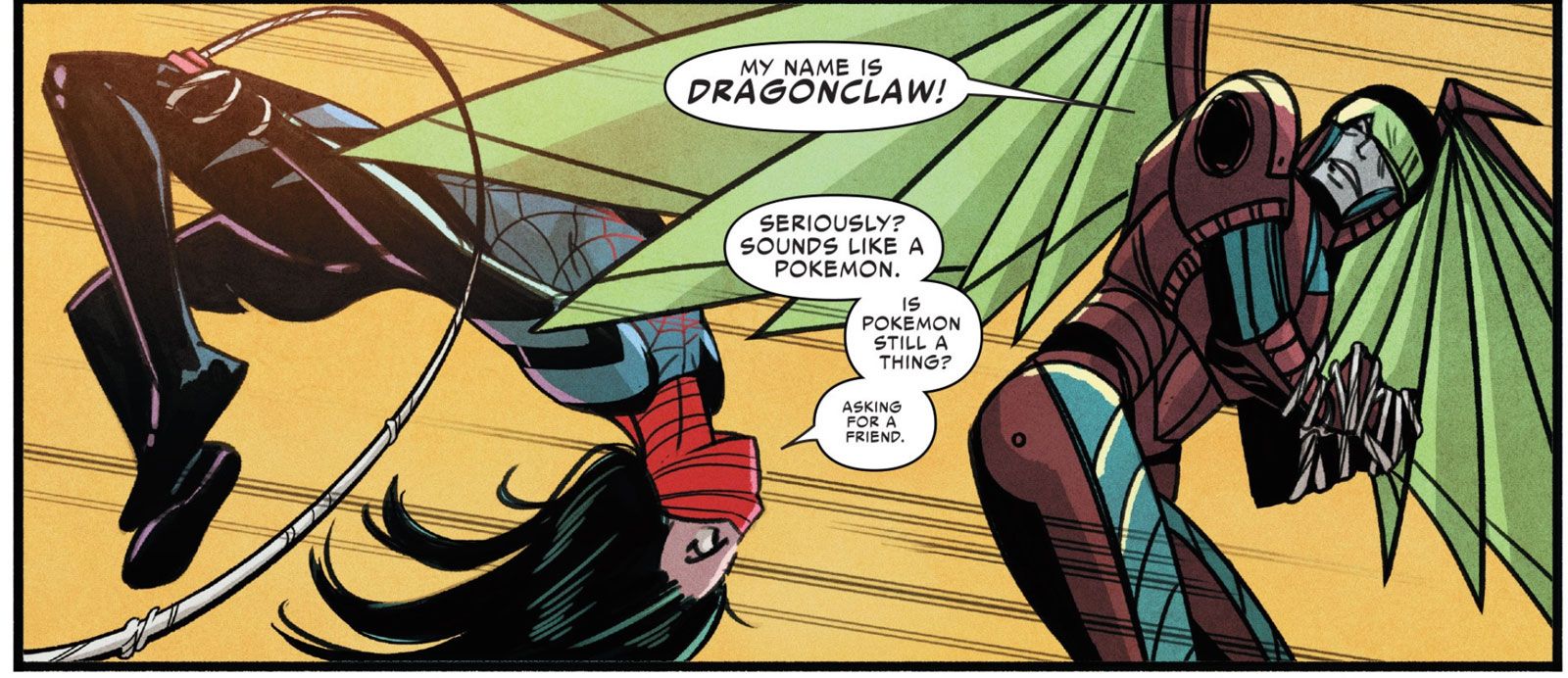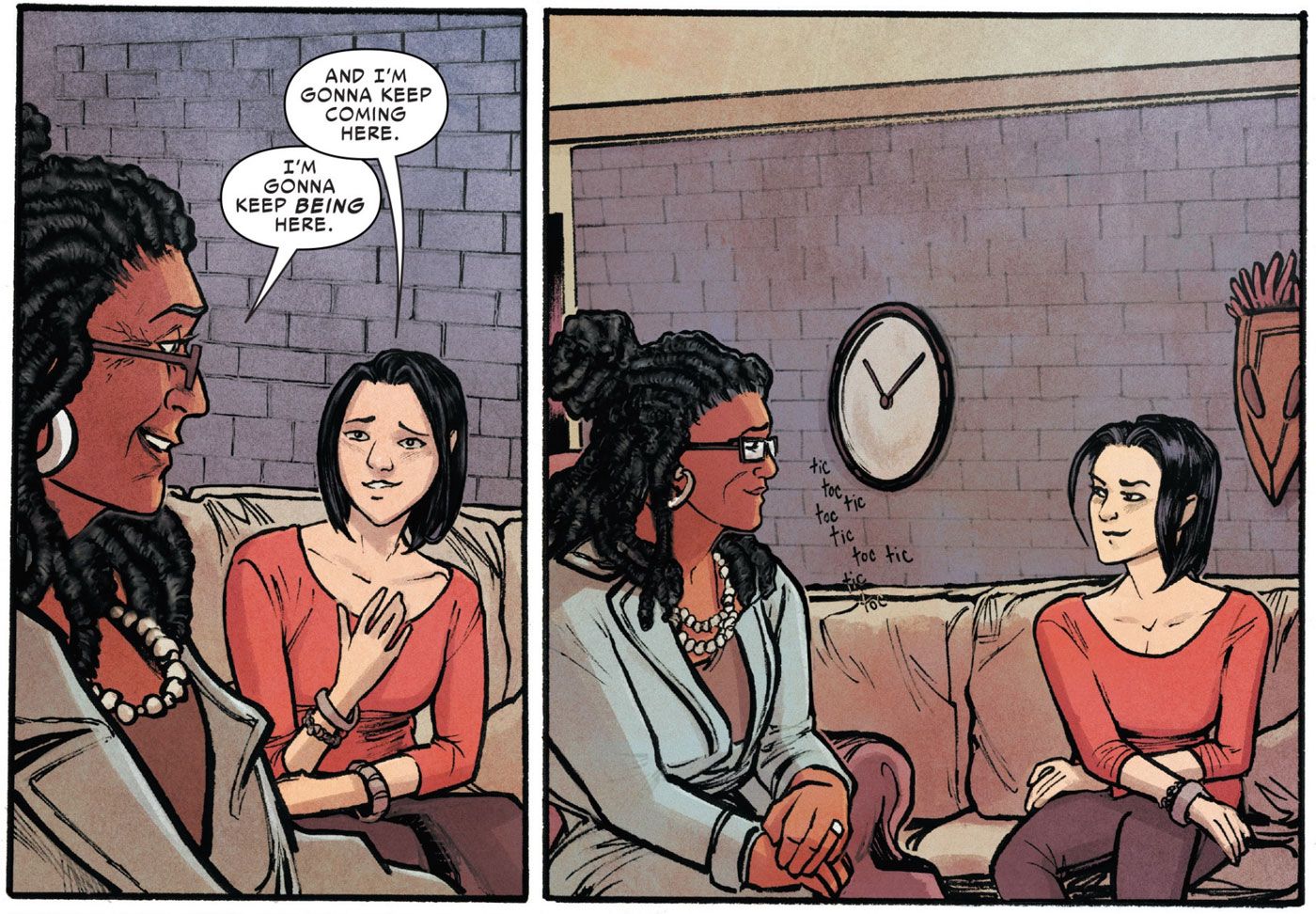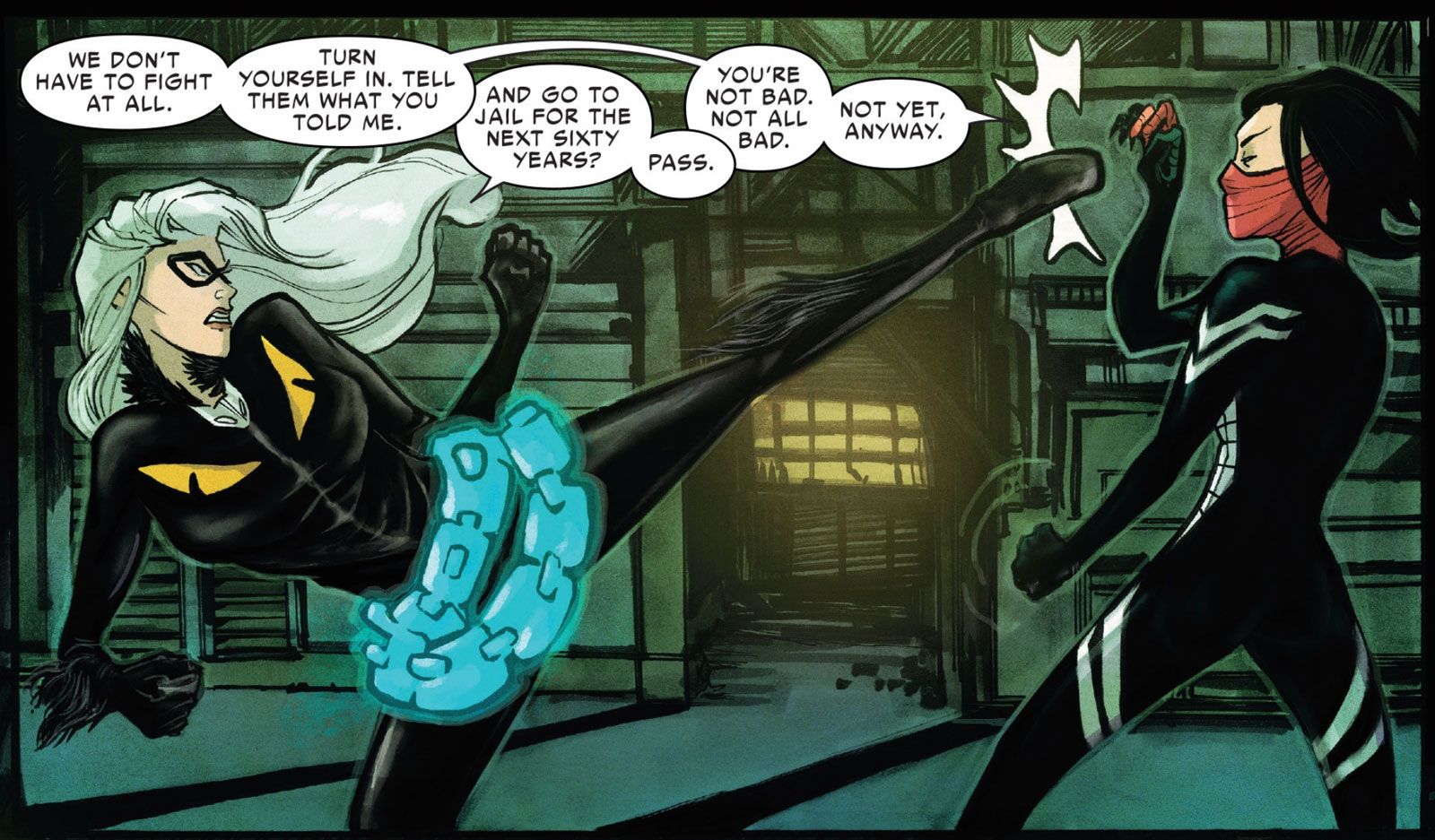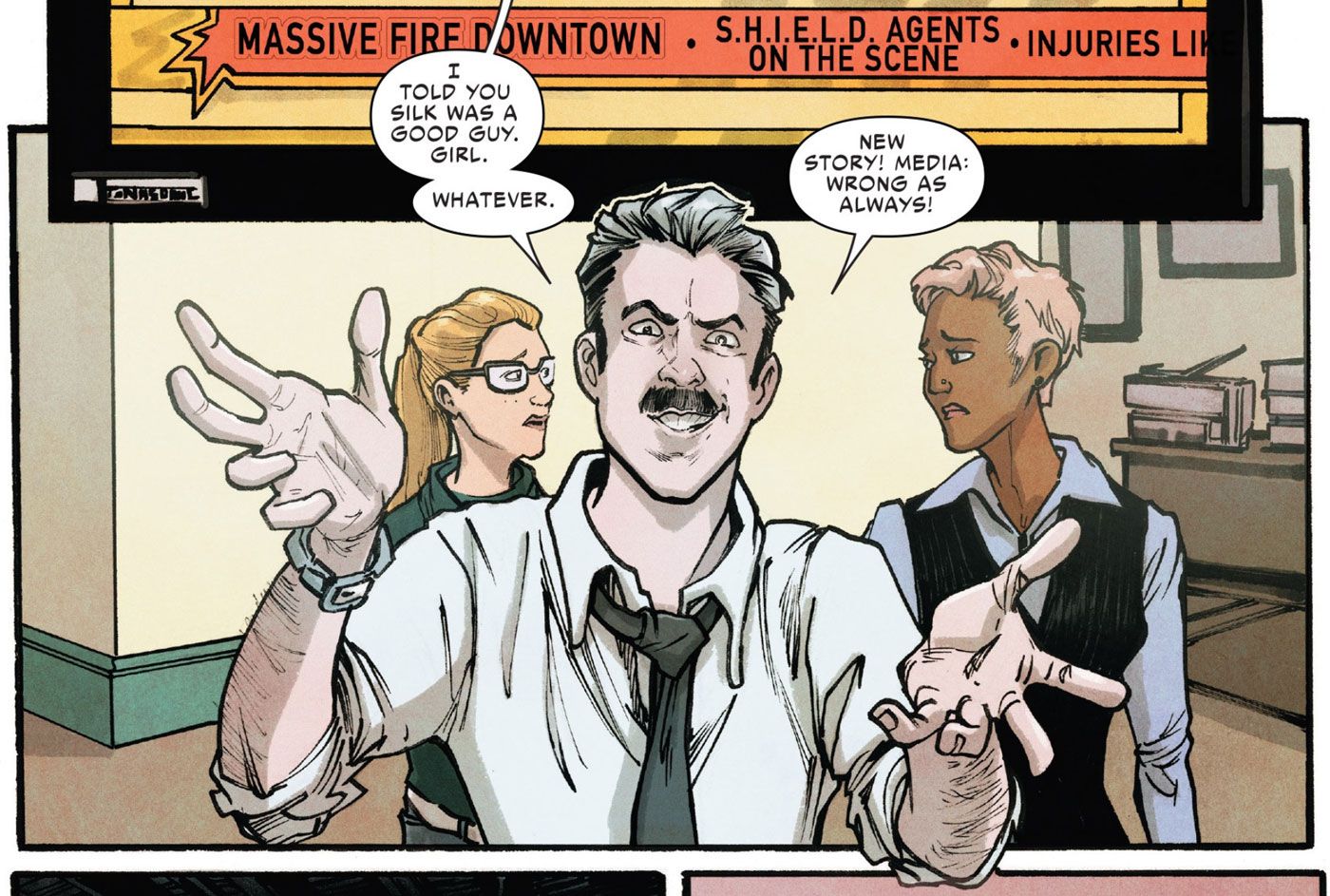Last month, Marvel Comics published the final issue of "Silk," a comic which told the story of Cindy Moon, who was bitten by the same radioactive spider as Peter Parker.
"Silk" launched in February 2015, spinning out of the "Spider-Verse" event at what was the recent high mark of Marvel's Spider-Man office. In addition to the double-shipping "Amazing Spider-Man," Marvel was also publishing "Miles Morales: Ultimate Spider-Man," "Spider-Gwen," "Spider-Man and the X-Men," "Spider-Man 2099" and "Spider-Woman." "Silk" was the seventh Spider-family ongoing series, and the third starring a Spider-Woman. Prior to launch, it felt destined to be the least essential, pegged for swift cancellation.
RELATED: The Importance of Addressing Trauma and Mental Health in Comics
Yet "Silk" would ultimately last over two years and 26 issues, plus a four-issue digital-first miniseries, "The Amazing Spider-Man & Silk: The Spider(fly) Effect." "Silk" outperformed fan expectations by finding a voice that was distinct from anything else in mainstream comics, offering the audience a glimpse of a hero struggling with her own anxiety and mental health, but who still managed to save the day. The result was one of the most emotionally compelling comics on the market.
This is all the more surprising given how Cindy Moon was portrayed in "Original Sin" and "Spider-Verse," which framed her as impetuous, uncooperative, mopey and literally sex-crazed. In large part, "Silk" owes its success to former Marvel editor Ellie Pyle, who saw potential for something more in Cindy Moon and put together the stellar initial creative team of Robbie Thompson, Stacey Lee and Ian Herring, with stunning Dave Johnson-illustrated covers. Thompson, best known for his work as a writer on The CW's "Supernatural" and as the current writer of "Doctor Strange," ultimately wrote all 26 issues of the ongoing series, as well as the "Spider(fly) Effect" miniseries.
In speaking with him at C2E2, Thompson told me he was drawn to Cindy Moon from the first moment she jumped out of her bunker, ready to fight crime. "If it was me, I would have just been like, 'I just want to lie down and never do anything.' That little moment, though, that to me was the whole character. That was someone who went through this traumatic event that is never going to give up... That is someone who I very, very much wanted to write."
Thompson and original artist Stacey Lee tapped into that joie de vivre. We immediately see Cindy Moon engaging in Peter Parker-style banter with villains, making outdated jokes with a "sorry, not sorry" attitude. But it quickly became apparent that there was something much darker going on beneath the surface; Cindy's ten years locked away alone in a bunker left her traumatized, her cheery external demeanor largely a coping mechanism. Before the first issue is over, Cindy flees back to her bunker, the one place she felt safe. It's a moment that perfectly encapsulates who Cindy was, and what kind of book "Silk" would be -- even if Thompson admitted to feeling awful for sending her back into her prison.
Cindy's trauma would eventually lead her to one of the book's shining points: her therapy sessions with Dr. Sinclair. Cindy's therapy sessions became the emotional backbone of the series, with them giving us a glimpse into Cindy's internal life beyond what is possible in a caption box. They also allowed for inventive storytelling, as where an issue was narrated by Cindy to Dr. Sinclair in one of their sessions.
Asked whether Marvel editorial pushed back against the role Cindy's therapy played in the book, Thompson said he experienced exactly the opposite reaction, saying, "Marvel could not have been more supportive of it, of that storyline." In fact, he started receiving editorial notes asking for more therapy scenes. "Literally [Assistant Editor] Devin [Lewis] would ask, 'Has she been to therapy? Is she okay?'"
Unlike many media representations of therapy, Cindy is not miraculously cured by series' end. Thompson said he wanted to avoid the pop culture narrative of, "Hey, I went to therapy, everything is okay now. HIGH FIVE!" Instead, the series comes to a close with Cindy telling Dr. Sinclair that she is going to keep coming to therapy. Cindy might have found her a level of happiness, but she is going to have to work to maintain it.
Cindy's transition into therapy coincided with the gradual switchover from original artist Stacey Lee to Tana Ford, who ultimately drew nearly half of the series. Ford's first issue, #7 of the pre-"Secret Wars" volume, featured Cindy's first therapy session, which took place at the literal end of the world.
When we spoke at C2E2, Ford talked about the difficulty of filling in for, and eventually replacing Lee. "I didn’t know how long I would be on the book, and so I wanted to do justice to Stacey's vision of what Silk was," she said. "I knew enough that I can’t ever be her. Her style is very different from my own, but I was really reaching for this relentlessly optimistic page feel that really isn’t in my nature. And so as I started doing more and more issues, I was like, oh, well this is just getting grittier, and it matched the stories that I was getting. But it was a difficult lift at first, when I thought I was only going to be on for an issue or two."
Just as Lee's art style meshed perfectly with Cindy's veneer of cheeriness in the early issues, Ford's more visceral style worked well for the back half of the series, especially in the extended "Sinister Silk" storyline in which Cindy went undercover for S.H.I.E.L.D. with Black Cat's criminal organization. Black Cat was a perfect counterpoint for Silk, as she represented the freedom Cindy lacked when inside the bunker. It's easy to see how Cindy would genuinely feel drawn to Felicia and find her worldview intoxicating. The arc works so well precisely because Cindy finds the prospect of staying with Black Cat so tempting. Ford's art also subtly plays up the never-quite-textual sexual tension between the two, reinforcing the feeling that Cindy really is losing something when it comes time to betray Felicia.
Where Ford truly excelled, however, was in the scenes with Cindy's Fact Channel co-workers Lola, Rafferty, and he ever-irascible J. Jonah Jameson. Ford is a master of facial expressions, helping to make relatively mundane work sequences as visually interesting as the fight scenes.
Ford especially brought a sense of authenticity to Lola and Rafferty, a lesbian couple who start dating in the first issue and are married in the series' final pages. Ford spoke about the pair at a C2E2 panel on mental health in comics, noting "One of the things I’m intensely proud of is that . . . we have side characters who are gay, an interracial lesbian couple, and they end up getting married and neither of them is murdered." Ford also made dialogue suggestions for the pair, including the callback to Rafferty's love of archery at the wedding.
If there is one great flaw with "Silk," it is that it was over too quickly. Thompson, who said he had hoped to do 50 issues of the series, admitted the final issue was jam-packed, finishing Cindy's story while finding room for important character moments with her family, Lola and Rafferty, Dr. Sinclair and even Peter Parker.
Far from bitter, Thompson is actually very magnanimous about the book's cancellation. "Marvel was actually really gracious. I knew at issue #14 that we were no longer going to be doing the book, and they actually gave us an extra issue for 'Clone Conspiracy' and they gave us the two issues past that to wrap up the storyline, which doesn’t happen, and that’s a credit to Nick and to Devin for really fighting to get us a little extra space... But, yeah, there’s literally six issues of story in three pages."
Thompson and Ford both remain confident that we'll see Silk again in the near future, though they're not sure where. With rumors that Cindy Moon will appear in "Spider-Man: Homecoming," her return might very well be sooner than we expect. Fortunately, we have 30 issues-worth of Silk's adventures to tide us over in the meantime.

